Most of you have probably heard the body can only absorb ~30g of protein in one go. Anything more than this is ‘wasted’.
But is this true? Spoiler alert: It isn’t. But hey, you’re here now so we might as well discuss it.
When we talk about ‘absorption’, we’re referring to how much of the protein you consume ends up in the stomach and the bloodstream.
Well, all of it.
While we associate protein with muscle-building and repair, only a small amount of the protein you ingest is put toward adding slabs of lean muscle to your frame.
~50% of the protein you eat is first extracted by the gut and liver. Of the remaining protein that makes it into circulation, 11% is used for muscle building. The rest is used for other metabolic processes (like neurotransmitter production), burned for fuel, or stored as fat. 1
So the real question is: How much protein can the body use for muscle-building?
This is where the confusion about protein absorption stems from.
Earlier research suggested that muscle-protein synthesis (MPS), the name of the process your body undergoes to build new muscle, is maxed out at ~25g of protein.
For example, a 2009 study published in the American Journal of Clinical Nutrition was one of the first to look at the relationship between protein dose and MPS: Six healthy young men with 4-8 months of training experience completed a bout of lower-body resistance training.
After the exercise session was completed, they consumed a drink containing 0, 5, 10, 20, or 40g of egg protein.
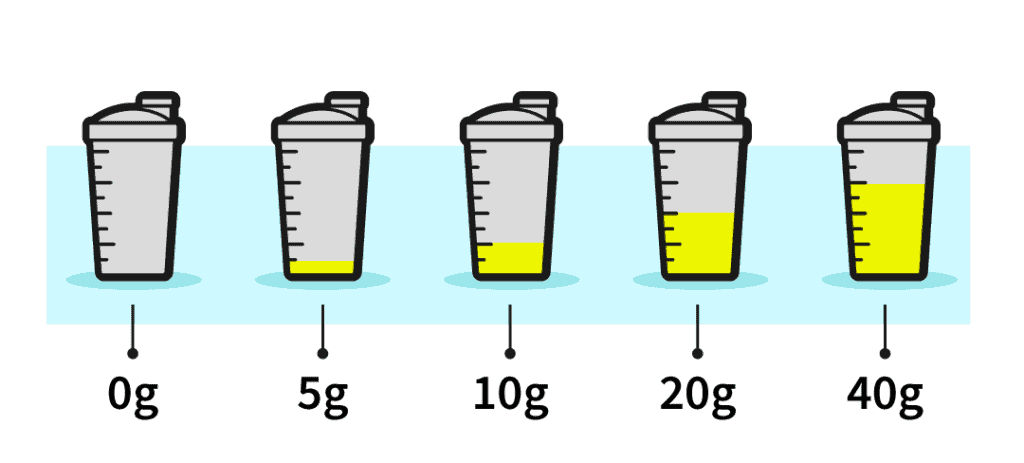
The researchers found that 20g of protein maximally stimulated MPS, with no significant benefit seen when consuming 40g of protein. While not significant, it’s worth mentioning that 40g of protein led to a 10% higher rate of MPS.
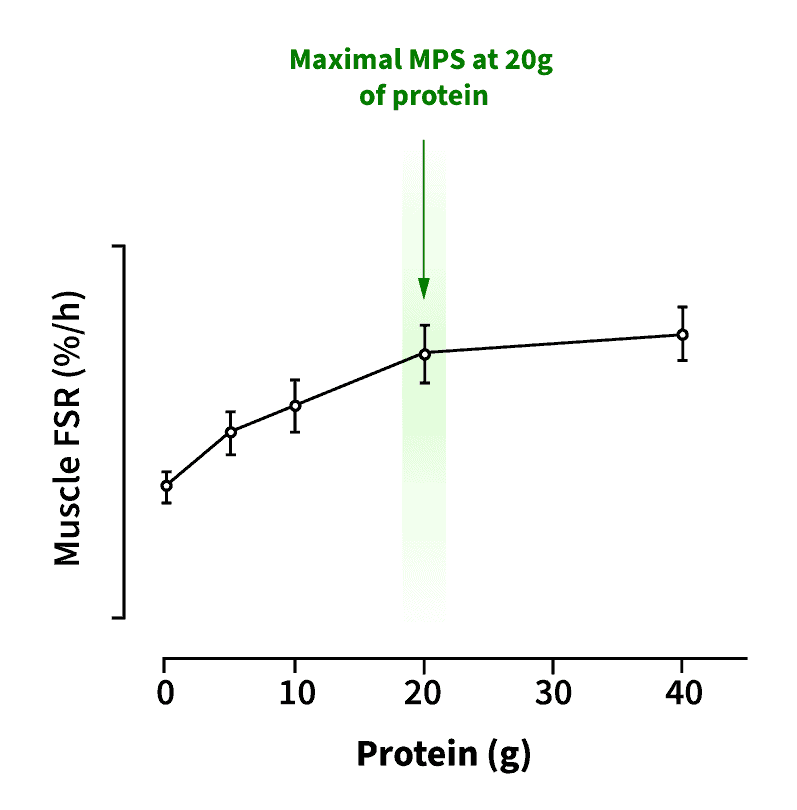
In line with these findings, Areta et al. split twenty-four resistance-trained men into three groups and had them perform four sets of the leg extension followed by 80g of whey protein over 12-hours in one of three conditions:
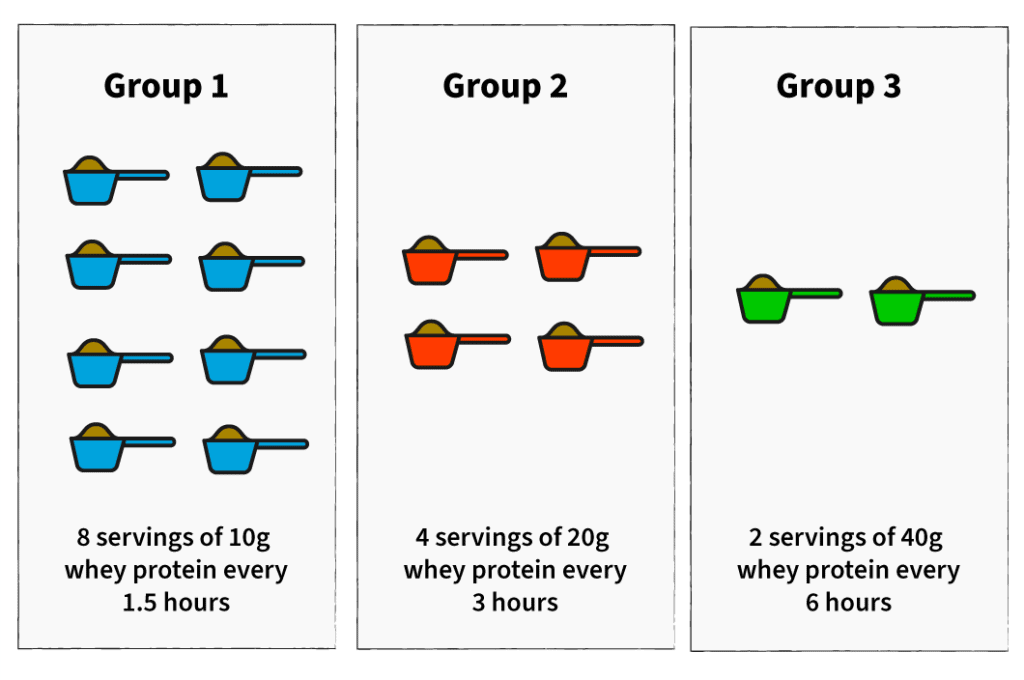
The results showed the group consuming 20g of protein every 3 hours had the highest MPS response.
Witard et al. also found that 20g of whey protein following a lower-body resistance-training session was sufficient to maximally stimulate MPS.
All of these studies led to the notion that eating more than 25-30g of protein in one sitting is ‘wasted’.
But there are a few issues with these previous studies.
The first issue is the type of training protocol that was used. In all of the above studies, subjects only trained one muscle group in isolation. Could there be a difference when more muscle groups are trained?
Well, a 2016 paper by Macnaughton LS et al. looked at exactly that. The researchers had a group of young men perform a whole-body resistance training session followed by either 20 or 40g of whey protein. The results showed that 40g of whey protein led to a ~20% higher rate of MPS than 20g.
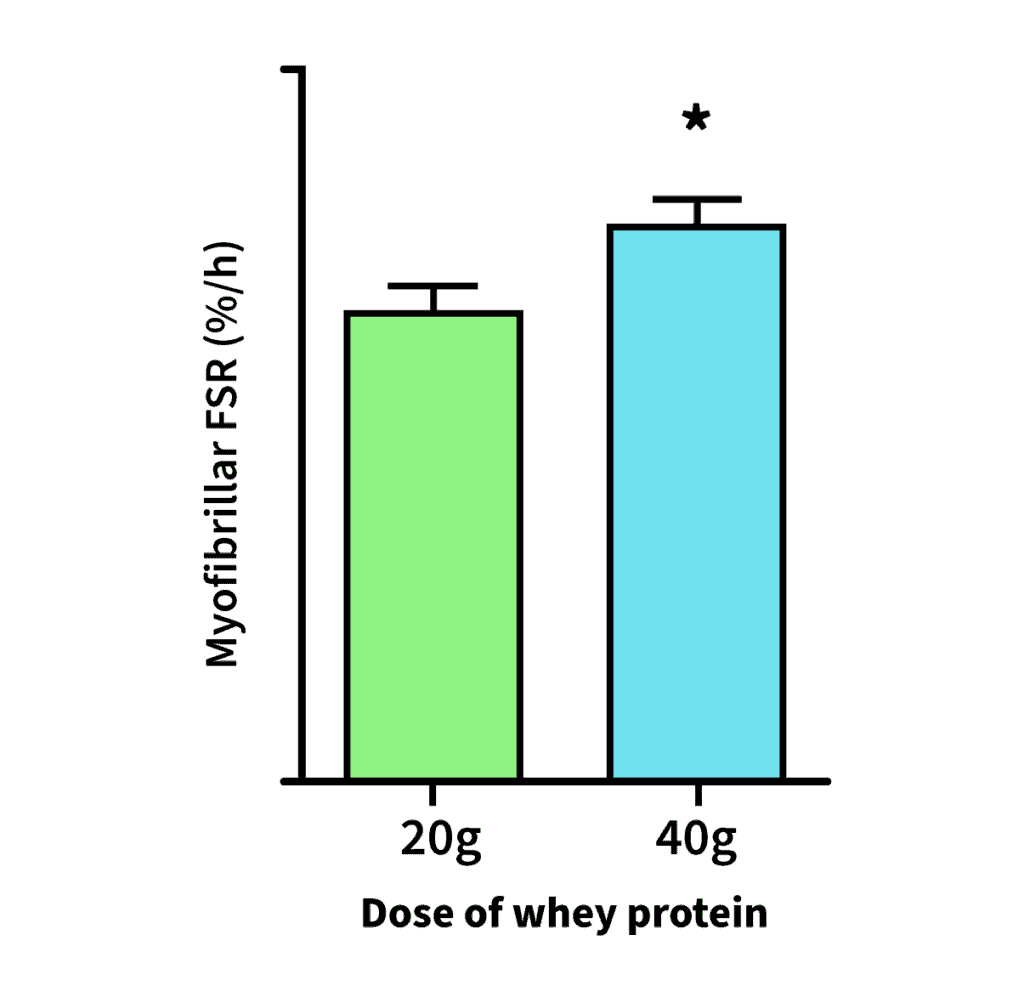
The researchers noted the most likely explanation was due to the amount of muscle activated during the training session. That is, the need for protein increases when multiple muscles are trained.
Second, previous studies only looked at muscle protein synthesis. But muscle protein synthesis is only half of the muscle-building equation. The other half is muscle protein breakdown.
As I explained in this article, what dictates muscle gain or loss is the balance between muscle protein synthesis and muscle protein breakdown.
Kim IY et al. found net protein balance was greater in the group consuming 70g of protein versus the group eating 40g of protein. The researchers noted this was due to the simultaneous increase in muscle protein synthesis and reduction in muscle protein breakdown.
In Sum
Considering all of this, we can conclude two things.
First, it seems at least 20g of protein per meal is needed to stimulate MPS. Second, while an upper limit has yet to be established, it’s definitely way more than the commonly cited ~25-30g of protein per meal.
For instance, a recent review by Trommelen J et al. noted that:
The ingestion of greater amounts of dietary protein results in greater amounts of dietary protein derived amino acids being incorporated into skeletal muscle protein, with no indication of an upper limit up to the ingestion of a dose of 45 g protein.
Ultimately, the most important thing as far as protein is concerned is to make sure you’re eating enough of it every day. Once that’s in order, how you distribute your protein intake per meal is up to you and what you prefer.
My general recommendation is 2-4 protein-containing meals per day during fat loss and 3-5 protein-containing meals per day during muscle building.
Thanks for reading. If you enjoyed this, you’d love Physiqonomics Weekly
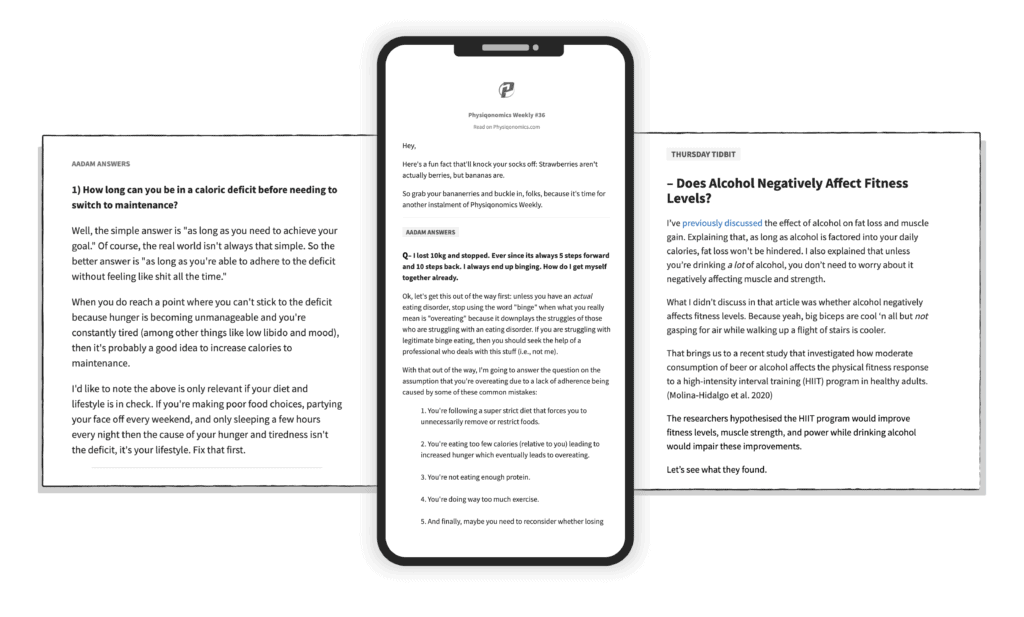
95% of my new content is only being sent out to my email list. One email every Thursday filled with actionable, evidence-based, fitness advice to help you with your goals. If you enjoy and find value in the website content, you’ll love my emails. You can learn more and subscribe for free here.